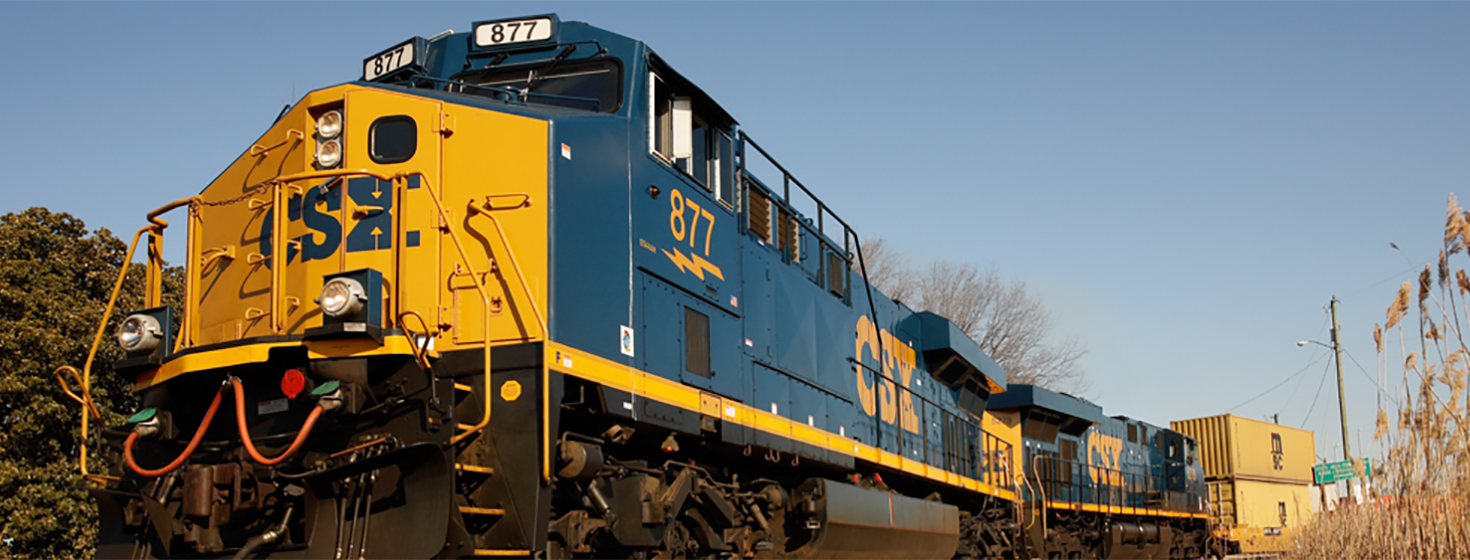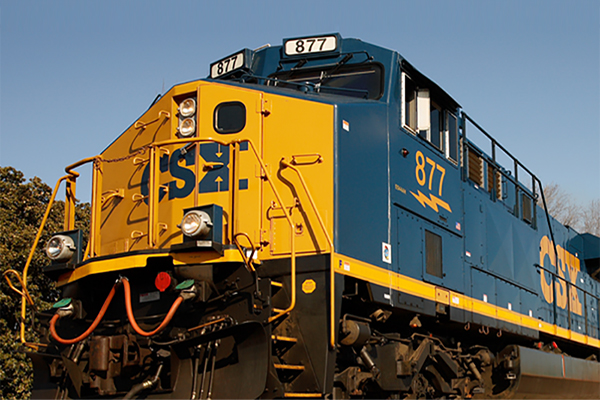CSX Delivering Profits That Hunter Harrison Was Promising

CSX Executive James M. Foote and his new management team at CSX released record financial results for the third quarter of 2018 and promised to carry out former CEO Hunter Harrison’s vision of a new, more efficient and more profitable railroad.
Profits Top Wall Street's Expectations
CSX Corp has reported quarterly profit that topped Wall Street's view and raised its full-year revenue forecast, as the No. 3 U.S. railroad operator benefited from ongoing cost-cutting and higher prices for moving freight.
Shares in CSX, which forecast 2018 revenue growth of 6 percent to 8 percent, largely due to unexpected strength in exports of coal, were up 1.7 percent at $73.40 in extended trading.
Wall Street was watching for signs that looming threats, such as tariff-driven trade disruptions and rising fuel costs, are hitting the sector's profitability.
Third-quarter net income at CSX almost doubled to $894 million, or $1.05 per share, topping the average estimate of 94 cents, according to Refinitiv data.
Interruptions from Hurricane Florence, which included the loss of five miles of track due to flooding and revenue losses due to transit disruptions, reduced earnings by 2 cents per share during the latest quarter.
CSX executives also said they expect no significant financial impact from Hurricane Michael, a fast-moving storm that slammed Florida's Panhandle last week. CSX and other U.S. transportation providers are widely seen as a bellwether for the U.S. economy.
Third-quarter revenue increased 14 percent from a year ago to $3.13 billion.
“The price increases that CSX receives for shipments are picking up” due to the tight trucking market that benefits both the Jacksonville, Florida-based company's container and general merchandise businesses, Edward Jones analyst Dan Sherman said in a client note.
Expenses fell 2 percent from a year earlier to $1.84 billion, as costs associated with increased volume and higher fuel prices were more than offset by efficiency gains. CSX has already hit its target of reducing headcount by 2,000 and executives vowed to make further cuts next year.
CSX Chief Executive James M. Foote told Reuters that tariffs on aluminum, steel, and soybeans have had minimal to no impact on the railroad and that a simmering trade war with China has not been a negative for the U.S. economy.
Foote, who has promised to take Hunter Harrison's Precision Scheduled Railroading turnaround effort forward, further stated to analysts;
“We are picking up right where Hunter left off, and we are going to deliver, just as he envisioned the way we operate the railroad by taking millions of unnecessary steps out of the business process that we use to run the railroad.”
This “drastic change” involves eliminating 2,200 jobs by the end of 2018, following the shedding of 3,300 jobs and 1,000 contractors and consultants in 2017. It also anticipates a further elimination of 4,000 jobs by 2020 through cuts and attrition.
CSX also plans to cut the number of locomotives by up to 20% by 2020, and shrink its fleet of rail cars by more than 20%. During the first nine months of 2017 when Harrison was in charge, he postponed 1,000 locomotives and removed about 60,000 freight cars from service.
“When there was a change in upper management, people kind of compensated and said 'well we are not going to get what Hunter Harrison was going to give us',” said Dan Sherman.
“But with (Tuesday's) result it's possible that's not true at all, and we'll get exactly what Hunter had promised,” Sherman added.
CSX hit its turnaround goal of driving down operating expenses as a percentage of revenue earlier than analysts expected, and Foote said the railroad has more opportunities to reduce overhead and boost revenue.
“We have a ton more to do” to continue to improve efficiency and grow the business, Foote told Reuters.
Related: CSX New Operating Management Structure to Drive Next Phase of Railroading Transformation
Related White Papers & Guides
Supply Chain Trends
A pool of over 150 supply chain professionals were asked about their transportation plans, challenges and opportunities for growth, the results provide insight into a wide range of issues and shed light on what supply chain managers plan to focus on in the coming year. Download Now!
Your Guide to Upcoming Trucking Regulations
As increased over-the-road regulations are set to go into effect in 2017, supply chain managers should take steps to prepare today in order to protect their organizations from negative impact. Download Now!
The X’s and O’s of Intermodal Rail in Supply Chain Management
As the coach of your supply chain, you have the opportunity to turn to your playbook and choose from multiple transportation modes to maximize the efficiency of your freight network. Download Now!
The Intermodal Rail Bracketology Guide
Learn how to identify sub-optimal full-truckload freight that is vulnerable to capacity constraints if and when a supply chain disruption occurs. Download Now!
Practical Steps for Highway to Intermodal Rail
Learn how to increase access to capacity, reduce transportation costs and mitigate exposure to future trucking regulations. Download Now!
Transportation Management Systems & Intermodal Rail
An interactive, personalized guide to learn more about the combined benefits of a TMS and intermodal rail. Download Now!
Highway to Intermodal Rail (H2R) Conversions Deliver Bottom Line Results
CSX Transportation has found that 96% of shippers have sub-optimized freight in their network. Does your organization? Find out and learn how to address sub-optimized freight in your supply chain. Download Now!
Article Topics
CSX News & Resources
Signs of progress are being made towards moving cargo in and out of Baltimore Top CSX executive places a sharp emphasis on railroading as a career path and service at NEARS Intermodal innovation? Crisis averted on U.S. railroads, with carriers and unions reaching tentative agreements CSX’s acquisition of Pan Am Railways is a done deal Baltimore breaks ground for double-stacking 126-year-old tunnel in ‘absolute game-changer’ CSX executive discusses railroad trends and themes at NEARS conference More CSXLatest in Transportation
Baltimore Bridge Collapse: Impact on Freight Navigating Amazon Logistics’ Growth Shakes Up Shipping Industry in 2023 Nissan Channels Tesla With Its Latest Manufacturing Process Why are Diesel Prices Climbing Back Over $4 a Gallon? Luxury Car Brands in Limbo After Chinese Company Violates Labor Laws The Three Biggest Challenges Facing Shippers and Carriers in 2024 Supply Chain Stability Index: “Tremendous Improvement” in 2023 More Transportation






















